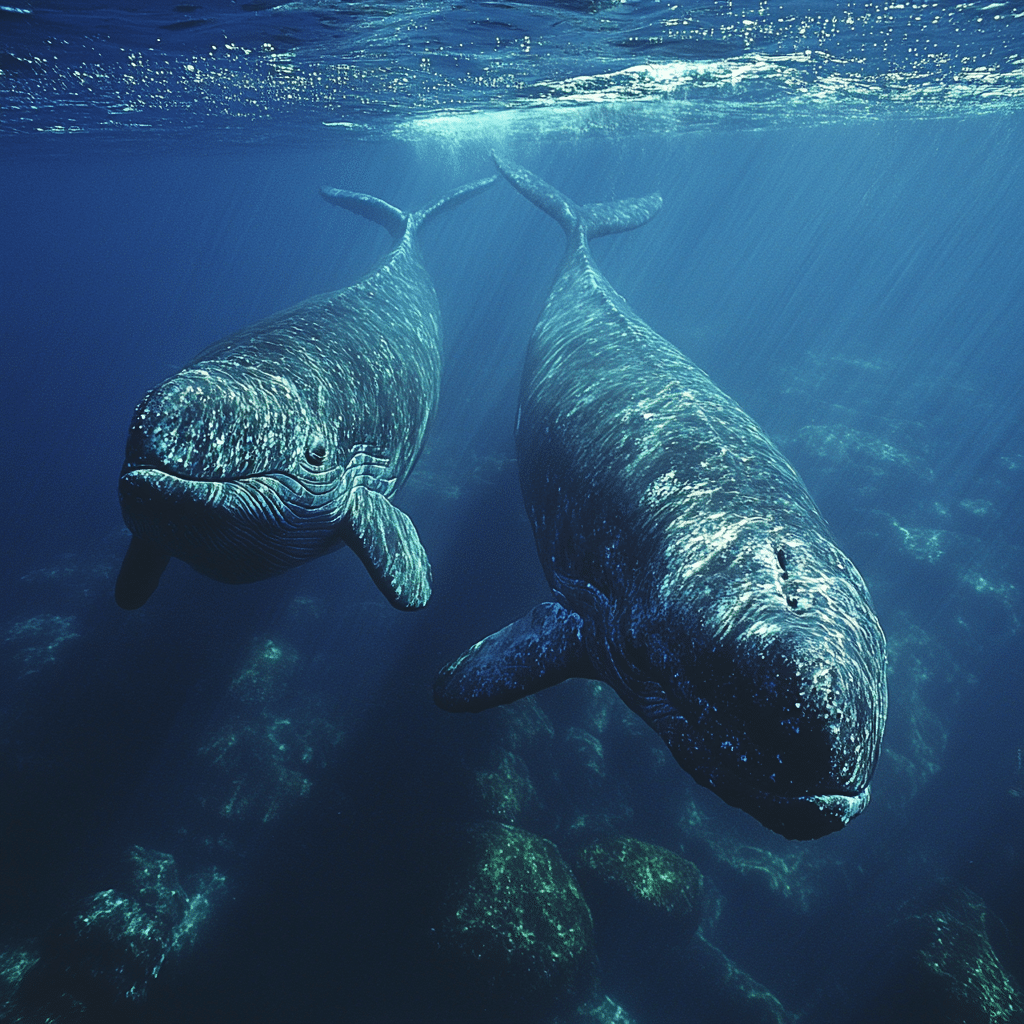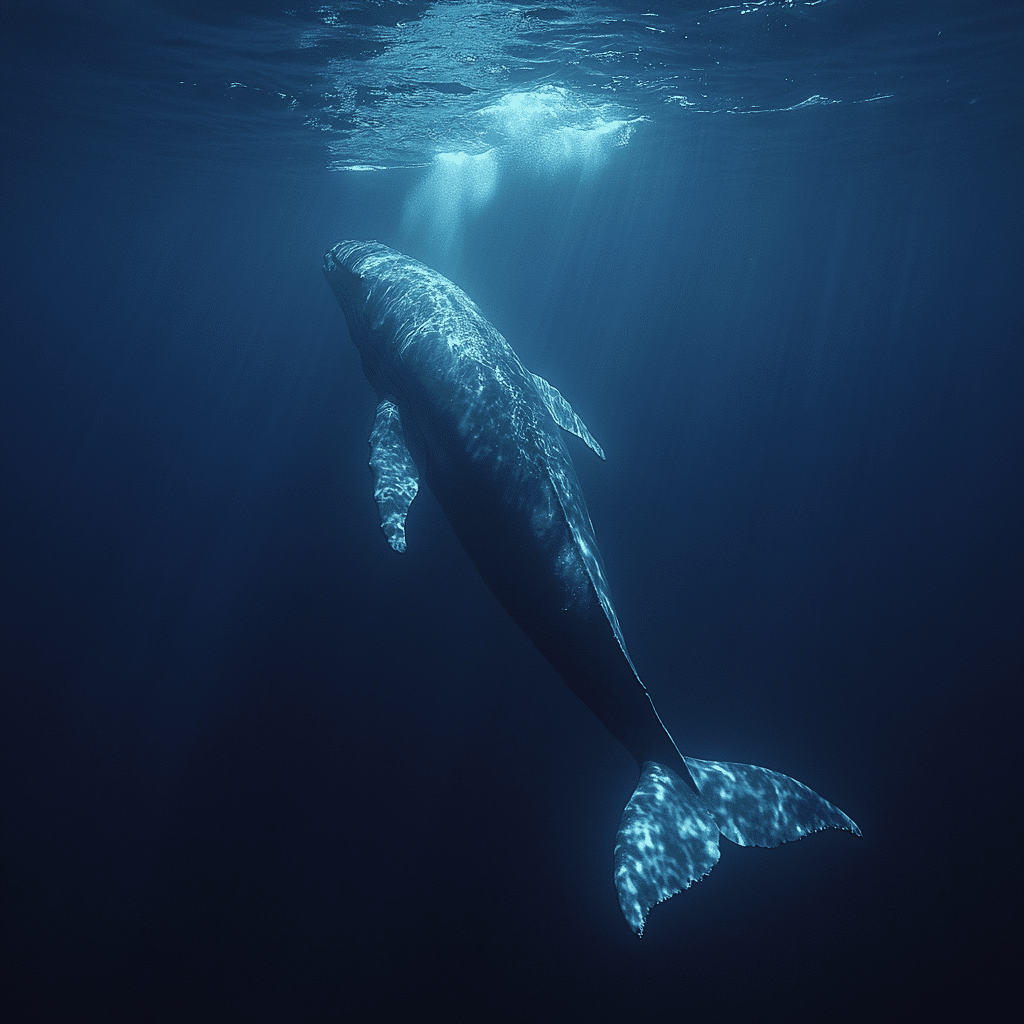H2 Header: Why Are Sperm Whales Called Sperm Whales? The Origin Explained
To truly understand why sperm whales are called sperm whales, we need to journey back to the early days of whaling in the 18th and 19th centuries. The name ‘sperm whale’ derives from the discovery of an unusual substance found in their heads, mistakenly believed to be sperm by early whalers. This substance, now known to be spermaceti, is a waxy liquid that played a significant role in the whaling industry, particularly in the production of candles, oil lamps, and lubricants.
Whalers, seeing the large volume of this milky-white fluid, thought they had stumbled upon the whale’s reproductive fluid. Little did they know, this spermaceti organ helps the whale focus sound, aiding in echolocation and buoyancy control. It’s a classic example of the misunderstandings that often accompany early explorations of the natural world.
Relationship with the Subsidiary Term ‘Cachalote’
Interestingly, the sperm whale isn’t known by a single moniker. In many Spanish-speaking regions, it’s referred to as ‘cachalote.’ The name ‘cachalote’ likely originates from the Portuguese word ‘cachola,’ meaning “big head,” aptly describing the whale’s prominent feature that houses the spermaceti organ. This different terminology showcases the cultural and linguistic diversity in understanding and appreciating these majestic creatures.
These regional differences in naming reveal how communities adapt their languages to describe what they observe in nature. The term ‘cachalote’ reflects an appreciation for the whale’s anatomical structure, highlighting its massive head, which dominates its form and function.

| Aspect | Details |
| Origin of Name | Derived from “spermaceti,” a waxy substance found in the whale’s head. |
| Spermaceti Description | An oil sac that helps whales focus sound. Historically used in oil lamps, lubricants, and candles. |
| Historical Misconception | Whalers mistook the spermaceti for whale sperm, leading to the name “sperm whale.” |
| Spermaceti Organ | An enormous fluid-filled organ in the whale’s head, originally called “the case” by whalers. |
| Scientific Understanding | The exact purpose of the spermaceti organ is not fully understood by scientists. |
| Docile Nature | Despite their name and size, sperm whales are known to be docile and there have been no reports of them harming humans. |
| Etymology of ‘Sperm’ | The word “sperm” is derived from the Greek word σπέρμα (sperma), meaning “seed.” |
| Name Timeline | The name has been in use since whalers first started harvesting them and encountering the spermaceti. |
Cultural and Linguistic Variations: The ‘Kashalot’ Animal
In Eastern Europe and Russia, the sperm whale is known as the ‘kashalot.’ This name, similar to ‘cachalote,’ emphasizes the magnificent shape and size of the whale’s head. By exploring different cultural interpretations and terminologies, we can better appreciate the global significance and fascination with the sperm whale.
The word ‘kashalot’ signifies more than just a name; it represents how different cultures perceive and interact with these marine giants. This animal, often viewed through the lens of regional traditions and languages, highlights the shared human fascination with the natural world and its inhabitants.
The Spermaceti Organ: Misunderstandings and Materials
Early whalers, struck by the large volume of the milky-white substance in the spermaceti organ, mistakenly termed it “sperm oil,” believing it to be the reproductive fluid. Modern science has since debunked this myth, revealing that spermaceti serves to aid the whale in buoyancy and echolocation. This discovery underscores the importance of questioning historical narratives and continuously advancing our understanding of marine biology.
Scientists have found that the spermaceti organ is an integral part of the whale’s ability to dive deep into the ocean, hunting giant squids hundreds of meters below the surface. This liquid wax also assists in regulating the whale’s buoyancy by adjusting the density of the oil in response to temperature changes, allowing for more efficient diving and surfacing.

Connection to Whaling History and Economy
Sperm whales played a vital role in the economic prosperity of various whaling industries worldwide. The high demand for spermaceti and baleen impacted global trade networks deeply, involving corporations like the Nantucket Whaling Company and notable figures such as Herman Melville, whose seminal work “Moby Dick” immortalized the adventures and dangers of whaling.
The booming whaling industry of the 18th and 19th centuries saw countless ships setting sail in search of these giant sea creatures. Spermaceti was highly prized for its use in products like candles and lubricants, making it a cornerstone of the economy in whaling towns. This historical context helps us understand how the sperm whale earned its name and how humanity’s relationship with the species evolved over time.
Additional Unique Features of Sperm Whales
Sperm whales are known for more than just their spermaceti. Their deep-diving abilities, social structure, and complex communication systems using sonar clicks, known as codas, make them one of the most intriguing marine animals. Their sophisticated use of echolocation to hunt giant squids hundreds of meters below the surface is a testament to the evolutionary marvels of the natural world.
These whales can dive to depths exceeding 1,000 meters and hold their breath for up to 90 minutes, showcasing incredible adaptations to their deep-sea environment. Furthermore, the social bonds within their pods are strong, with intricate relationships and communication methods that continue to fascinate researchers and enthusiasts alike.
Comparisons and Contrasts: Sperm Whale versus ‘Bear Without Fur’
While the term ‘bear without fur’ might seem unrelated, some comparisons can intrigue readers. Sperm whales, often regarded as the ‘giants of the ocean,’ share certain commonalities with terrestrial giants like bears in terms of size and dominance in their respective ecosystems. However, unlike the hypothetical ‘bear without fur,’ sperm whales’ unique physiological adaptations, such as their spermaceti organ and ability to dive to incredible depths, highlight the extraordinary evolutionary paths taken by these marine behemoths.
Both creatures demand respect in their habitats: the ocean for sperm whales and the forest for bears. Yet, their evolutionary trajectories have equipped them with distinct features suited to their environments, making the comparison an interesting thought experiment in understanding the diversity of nature.
Modern-day Sperm Whale Conservation Efforts
In recent years, significant strides have been made toward the conservation of sperm whales. Organizations like the World Wildlife Fund (WWF) and the International Whaling Commission (IWC) play pivotal roles in protecting these creatures from threats like ship strikes, climate change, and entanglement in fishing gear. Continued research and conservation efforts are crucial to ensuring the survival of sperm whale populations globally.
Efforts include implementing protective legislation, creating marine sanctuaries, and fostering international cooperation to tackle issues such as pollution and illegal whaling. Education and awareness campaigns also play a critical role in garnering public support for these majestic animals.
Innovative Wrap-up: The Continuing Legacy of the Sperm Whale
Exploring why sperm whales are called sperm whales opens a window into a rich tapestry of historical, cultural, and biological narratives. These giants of the ocean continue to capture our imagination and remind us of the delicate balance within marine ecosystems that must be preserved. By delving into the origins of their name and understanding their fascinating characteristics, we gain a deeper appreciation for these majestic creatures and our responsibility to protect them for future generations.
The sperm whale’s story is a fascinating intersection of human history, marine biology, and global fascination. Their legacy is not just one of economic value in the whaling industry but also one of awe-inspiring adaptations and conservation triumphs. To better understand this enigmatic creature is to appreciate the diversity and complexity of life in our oceans, encouraging efforts to safeguard their future.
Don’t forget to check out “Why Are Sperm Whales Called Sperm Whales?” on www.CWMnews.com for an even deeper dive into this incredible topic! Visit links like The grieving, Joshua Davis, and congratulations The Irs Has accepted Your return for more intriguing articles that capture the essence of our diverse and ever-evolving world.
Why Are Sperm Whales Called Sperm Whales? Uncover Truth
Ever wondered why sperm whales got their peculiar name? It’s quite a tale, really. The name “sperm whale” comes from the discovery of a waxy substance found in their heads known as spermaceti. Back in the day, sailors mistakenly believed spermaceti was sperm, leading to the whale’s misleading name. Speaking of odd discoveries, did you ever click on a tip screen image and wonder how these small actions can ripple into significant impacts?
Historic Misunderstandings
The 18th century was ripe with seafaring adventures and curious minds. When whalers first encountered the large melon-shaped head of sperm whales, they found it filled with a mysterious, milky-white substance. They thought it was a massive reservoir for sperm. Imagine that surprise! This spermaceti wasn’t actually sperm but a type of oil. Sailors utilized this oil for candles, lubricants, and creams, giving new meaning to resourcefulness. Similarly, finding out the unexpected intricacies of weather databases is a bit like exploring uncharted waters, as you can see with the Metoffice falmouth.
Fun Facts about Spermaceti
Spermaceti was prized not only for its versatility but also for its unique properties. It remains solid at room temperature but melts at about 122 degrees Fahrenheit. This feature made it incredibly useful, especially for high-quality candle making. Ah, the 18th century’s version of must-have tech! Incredible, right? Speaking of tech, those seeking more intellectual diversions might enjoy learning from some of the best short Ted talks, packed with knowledge and insights.
Quirky Historical Tidbits
But there’s more to the story! Did you know that sperm whales can dive over 3,000 feet and hold their breath for up to 90 minutes? It’s almost as mesmerizing as finding out quirky phenomena such as Pornrules of early internet days. These mammals needed that endurance to hunt their favorite prey, giant squids, in the deep ocean. Isn’t it fascinating how every little detail about these creatures connects with historical and biological facts?
In short, the name “sperm whale” might stem from a misunderstanding, but it opened the doorway to endless exploration and curiosity. From bizarre historical misconceptions to incredible biological feats, there’s always more beneath the surface when it comes to these magnificent whales.

Do sperm whales actually have sperm?
Sperm whales don’t actually have sperm in their heads. The confusion comes from a liquid, called spermaceti, which whalers found in a big oil sac in their heads and wrongly thought was sperm.
How did sperm whales get their name?
Sperm whales got their name from the spermaceti organ in their heads. Whalers who found this oily substance believed it was the whale’s sperm, which led to the name.
Are sperm whales friendly to humans?
Sperm whales are generally docile and not dangerous to humans. There are no reports of sperm whales attacking or eating humans.
Why is it called sperm?
The term “sperm” in sperm whale is actually from “sperma,” the Greek word for seed, due to a misunderstanding by early whalers.
Why are orcas afraid of sperm whales?
Orcas, also known as killer whales, tend to avoid sperm whales because sperm whales are organized, social animals that can defend themselves effectively against orca attacks.
Has a sperm whale ever killed a human with sound?
There’s no evidence that a sperm whale has ever killed a human using sound. While they make powerful noises, there’s no record of these causing death to humans.
What eats sperm whales?
Sperm whales are preyed upon mainly by orcas, especially young or weak whales. Besides orcas, sperm whales don’t have many predators.
What is the lifespan of a sperm whale?
Sperm whales can live around 70 years. That makes them one of the longer-lived marine mammals.
What were sperm whales killed for?
Sperm whales were primarily hunted for the spermaceti in their heads, which was used in oil lamps, candles, and lubricants, as well as for their blubber and ambergris.
Which is the most aggressive whale?
The most aggressive whale is considered the orca, or killer whale, which is known for its hunting skills and complex social structures.
Is it safe to swim next to a sperm whale?
Swimming next to a sperm whale is generally safe. These creatures are known to be gentle giants in the ocean, although it’s always wise to be cautious around wild animals.
What is the largest sperm whale ever recorded?
The largest sperm whale ever recorded was about 67 feet long. These giant creatures are truly some of the ocean’s behemoths.
Why do sperm whales sleep vertically?
Sperm whales sleep vertically because it makes it easier for them to stay buoyant and quickly rise to the surface for air if they need to wake up suddenly.
How long can sperm whales stay underwater?
Sperm whales can stay underwater for up to 90 minutes, which they often do when diving deep in search of food.
What are 5 facts about sperm whales?
Sperm whales are the largest toothed predator on Earth, they have the biggest brain of any animal, and they use echolocation to find food. They also dive deeper than most marine animals and communicate through complex vocalizations.
Do sperm whales have sperm in their head?
No, sperm whales don’t have actual sperm in their heads. The oily liquid found there, called spermaceti, confused early whalers into thinking it was sperm.
Do sperm whales have balls?
Yes, like all male mammals, sperm whales have testicles. However, they are located inside their bodies, not externally.
Where does whale sperm come out of?
Whale sperm comes out of the male’s genital slit, which is located on the underside near the tail, similar to many other mammals.
How do sperm whales mate?
Sperm whales mate through internal fertilization. Males compete for females and engage in seasonal breeding, after which the female carries the calf for about 15-16 months before giving birth.



